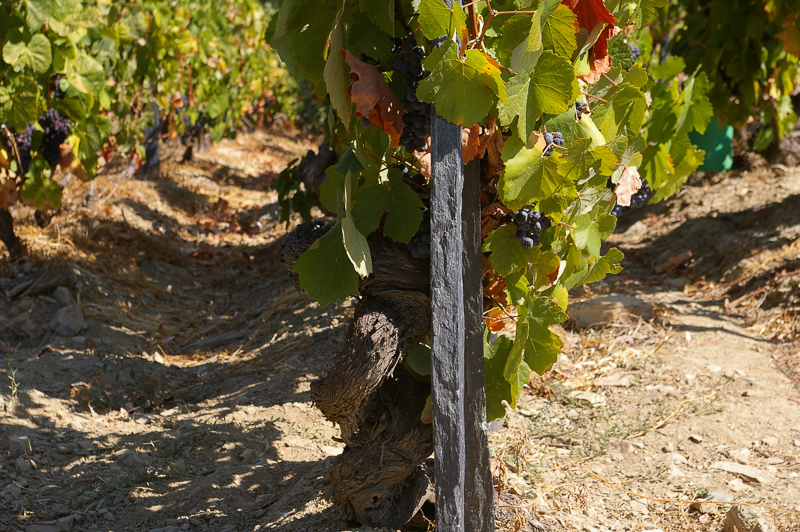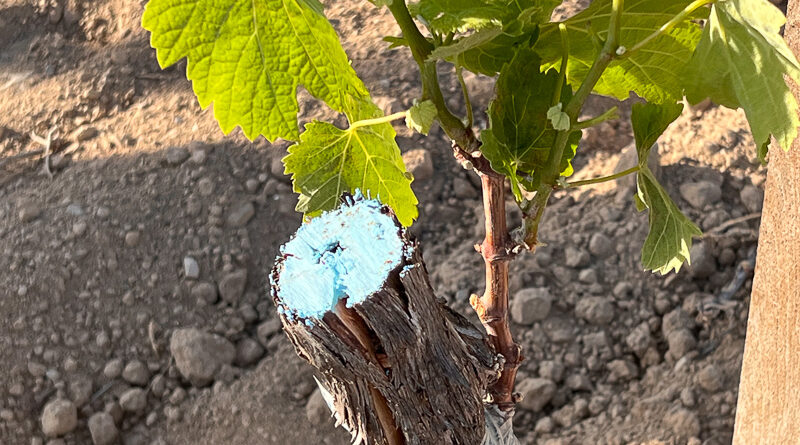Grafted versus ungrafted vines: Francs de Pied re-open the debate
There’s a new organization in the world of fine wine. It looks a bit like an elite members club from a distance, with a roll call of some of the great and good of the wine world. Called les ‘Francs de Pied’, this producer organization joins together those who are working with ungrafted vines, although there’s a caveat here: its membership is so far only European, because these ungrafted vines have to be native varieties in their place of origin. And its president is not without some controversy of his own. Loïc Pasquet runs Liber Pater in Bordeaux, and hit the headlines by releasing his wines at the heady price of €30 000 per bottle. Other members include Nicolas Maillart, Thibault Liger-Belair, Philippe Charlopin, Kostis Dalamaras, Paris Sigalas, Egon Müller, Katharina Prüm and Antonio Capaldo.
So far, this all looks quite interesting. Nothing wrong with top producers, who still have some ungrafted vines, getting together over dinner and sharing their stories. Where it becomes a little problematic is when assertions about ungrafted vines being better in some way than grafted vines, and the suggestion that if a vine is grafted that something has been lost. The science here doesn’t necessarily stack up.
Before the late 19th century no vines were grafted, even though grafting of fruit trees is an ancient technique. There was simply no need to graft. And vineyards would have looked quite different to how they do today. If a new vine was needed, it was enough either to plant a cutting into the ground, or to bury part of a cane, keeping it connected to the mother vine, a process called layering. High planting densities were common, and neat rows with enough width for a tractor weren’t needed. Planting en foule (randomly planted more-or-less equally spaced vines) was quite common.
Then along came phylloxera, necessitating the replanting of pretty much all vineyards on resistant rootstocks. A breeding program at the time resulted in many different crosses of American vine species to come up with the range of rootstocks available today. More recently, further crosses have resulted in new rootstocks like Fercal, although there is a somewhat concerning lack of effort breeding new rootsock species. The rootstocks available were selected for resistance to phylloxera, ease of grafting and then traits such as lime tolerance, drought resistance, and higher and lower vigour.

Phylloxera is still present in vineyard soils across the world, with a few exceptions. This insect pest can’t survive in sandy soils (hence the vine repository at Vassal is planted in sandy soils so grafting of all the different varieties isn’t needed) and is killed when the vineyards are flooded. And there are a few places where it was never introduced (notably Chile and South Australia).
During the grafting process, a cut is made in both the rootstock and the scion, and the wood is joined with the cambial layer (just under the bark) in connection. The first response is the growth of lots of undifferentiated cells called a callus. Then vascular tissue forms in each of the components, which then joins to give vascular continuity, with the phloem and xylem of the rootstock and scion now joined. A good graft will last at least 100 years and will maintain this continuity.
Some people are under the impression that ungrafted vines somehow produce wines that are purer, and better respect the terroir. They notice that compared with grafted vines their ungrafted vines grow and perform differently. But the assumption made, perhaps incorrectly, is that this difference is contributed by the grafting process. And mentally, yes, it does seem as though something artificial has been done to the vine – surely this must have a trade-off? And most winegrowers think that American species of grape vines are inferior to Vitis vinifera, because of the quality of the vine. The unspoken belief is that if the wine from American vine species and hybrids is questionable, then the roots aren’t as good, either.
This is confused thinking. If the graft union is good, then the vine will perform just as well as an ungrafted one. To talk of the ‘filtering’ effect of the graft union is fanciful. All the vine is receiving from the rootstock is water and mineral ions, and if the conductive tissue is functioning, then this will not be affected. The growth pattern of the roots will affect this, and the roots will also be signalling by way of hormones to the above-ground portion of the plant. But there is no evidence that American hybrid roots do this any better or worse than vinifera roots. What they do, however, is show differences. That is why the choice of rootstock is a viticultural tool. It’s also why it’s expected that growers will see a difference between their grafted and ungrafted vines, if they have them: they will have different rootstocks. To assume that vinifera rootstocks will automatically be superior is unfounded.
Of course, there is some discussion in the wine world about the quality of nursery work, and grafting in particular – but this is quite a separate issue. The answer to bad grafting isn’t abandoning grafting, but instead grafting better.
The odd thing about the discussions so far by Les Francs de Pied is that they have effectively excluded non-European wine regions. Chile has no phylloxera and many tens of thousands of hectares of ungrafted vines. Yet while there is no need to graft there, some have because this allows them to use the viticultural tool of rootstocks. If there was any great advantage to own-rooted vines in terms of wine quality, they wouldn’t have gone to the bother and expense of grafting. In Argentina, while phylloxera is present, many of the vineyards are ungrafted. Same with Washington State. South Australia doesn’t have phylloxera, and most of its vineyards are ungrafted too. Les Francs de Pied is planning a special label for ungrafted vines, and is looking to appeal to UNESCO to get recognition for ungrafted vineyards. But they are clearly not intending to extend this label and recognition to Chile, Australia and Argentina where many wines from ungrafted vines sell for €20 or less. This protectionism rankles a bit, because if the logic is that growing ungrafted vines produces better wine, then does it matter whether the variety planted is original to that country or not? Basically it is saying to new world countries: you can’t be part of this. [Also, someone better tell those in the Rhône and Bordeaux that Grenache and Cabernet Franc both came from Spain! So that rules them out.]
Encouraging people to plant ungrafted vineyard plots all seems a bit foolhardy. New Zealand’s Marlborough region was initially planted with ungrafted vines in the 1970s, but by the 1990s all these vineyards had to be replanted. In Oregon’s Willamette Valley there are still some ungrafted vineyards holding on, but they are slowly dying, as are the older vineyards in Central Otago in New Zealand. Meanwhile, almost all the most celebrated fine wines in the world are coming from grafted vines that are performing superbly. It’s great that producers want to keep very old ungrafted vineyards alive, and it’s nice that they have a club, but please let’s keep science central in the mix here.




